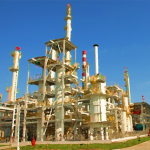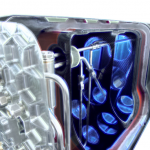 Our client, a well-known chemicals company, is potentially well placed to exploit the ‘Hydrogen Economy’. This area has many companies and researchers working in it, so it’s vital to pick the right areas of this emerging industry to focus on.
Our client, a well-known chemicals company, is potentially well placed to exploit the ‘Hydrogen Economy’. This area has many companies and researchers working in it, so it’s vital to pick the right areas of this emerging industry to focus on.
The client has plentiful hydrogen produced as a bi-product of some of its industrial processes, expertise in electrolysis technologies and is experienced in handling and storing this gas.
nu Angle was tasked with helping the client to define areas to focus on. It was to design, organise and facilitate a workshop to align individuals and get agreement on the priority areas. The results were fascinating.
The Issue

The term “Hydrogen Economy” refers to a proposed system of delivering energy using hydrogen as thermal and/or electrochemical fuel. It will become sustainable when electricity generated from renewable energy sources is stored as hydrogen. The three key elements will be: production, storage and utilization of hydrogen as an energy carrier.
nu Angle’s approach
The “H2 Economy” is currently emerging and in the next decades will probably be based on a highly specialised industry requiring expertise and innovative technologies, so there will be great potential for job and wealth creation.
To capitalise on its position our client required a robust technology strategy, clear focus, an aligned innovation team drawn from across the business and a good implementation plan.
The aim of the workshop was to create a small number of well-categorised opportunities within the emerging hydrogen economy space that the company is well placed to exploit.
This required the workshop to have a number of parts:
Create an understanding of the space so all participants are on the same page. An outside expert speaker was invited to help develop understanding of the space and provide an external dimension.
Briefing materials before workshop. Reading material was generated using inputs from internal company knowledge, desk based research and discussion with some external experts. This work was crucial as it added objectivity, more knowledge and outside insights ahead of the workshop.
Development of the opportunity spaces. The workshop was followed by a discussion about feasibility, timescales, costs and fit with the company’s capabilities.
Prioritise opportunity spaces. This was done within the workshop according to agreed and well defined commercial and technical criteria. nu Angle used one of its own software tools to allow scoring and rapid analysis.
Clustering into main growth areas. Various clustering and mind mapping techniques were used to cluster areas that appeared attractive and that could be exploited.
An articulation of opportunities. The output of the workshop was a set of well described opportunities, agreed by the team and a set of implementation actions. This has enabled the company to focus its combined resources in an effective and efficient manner.
Work is continuing within various parts of the company to implement the outputs of the workshop.
Further suggestions for high value uses of large volumes of hydrogen would still be of interest to us.
